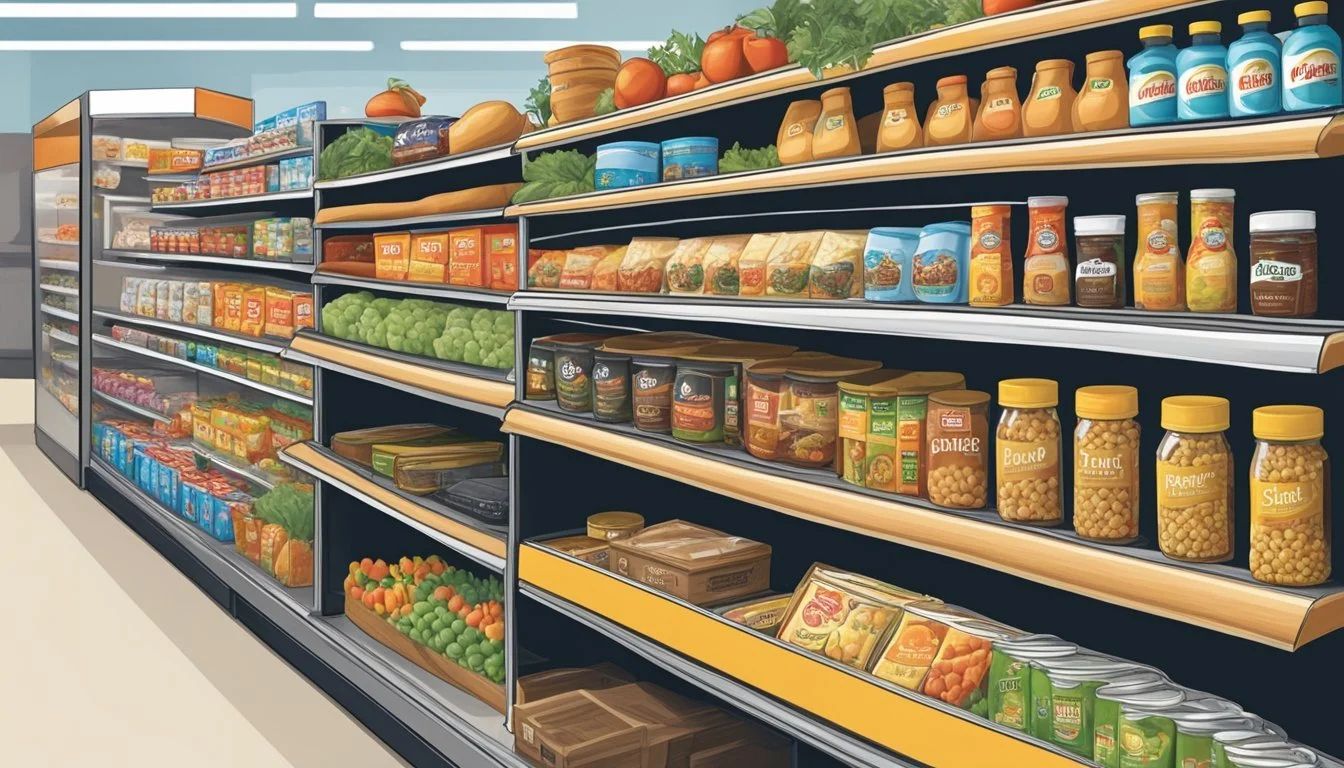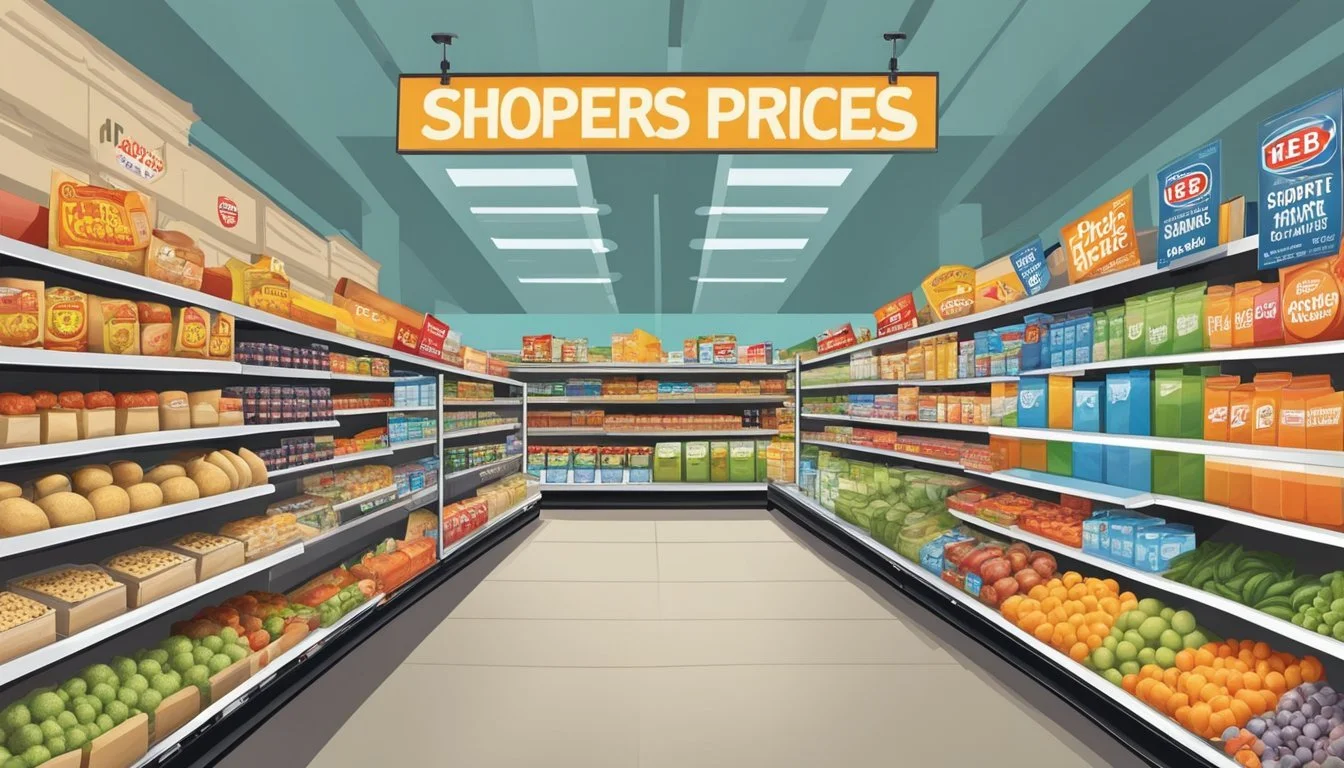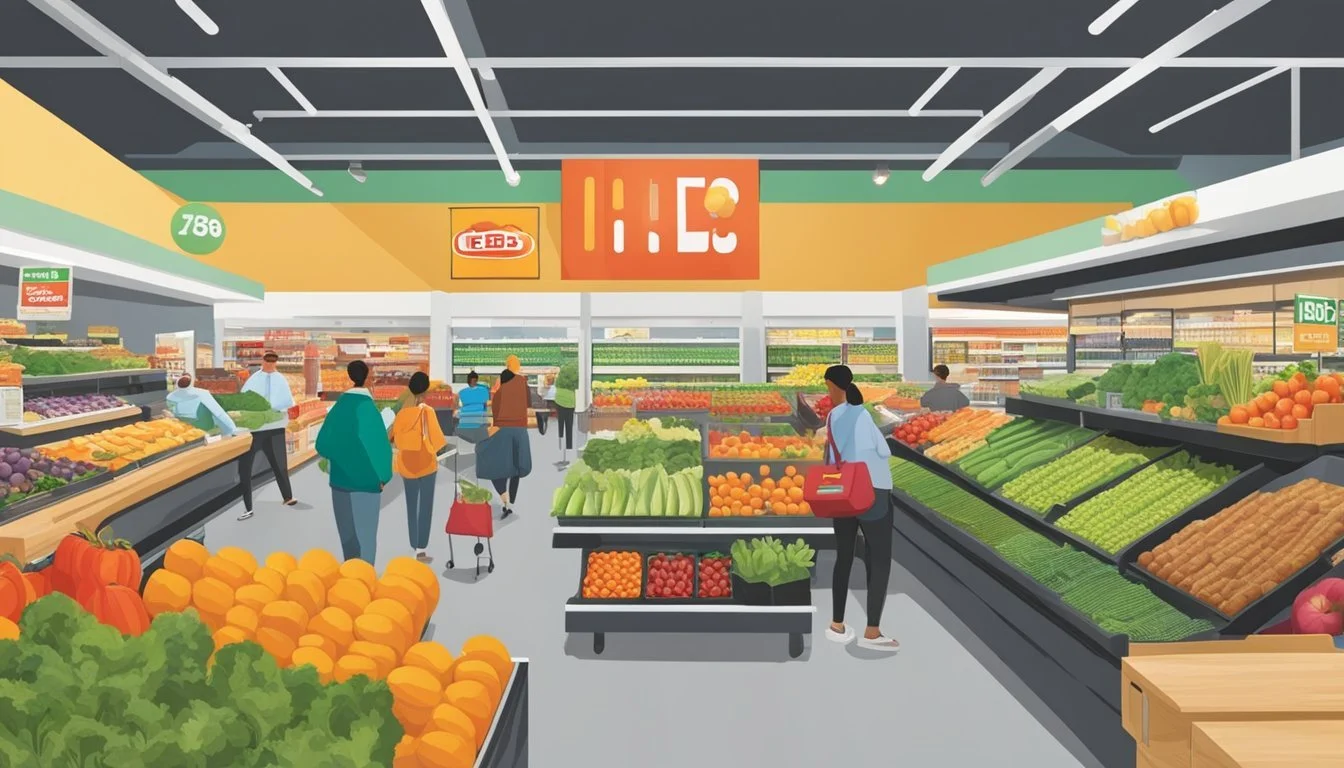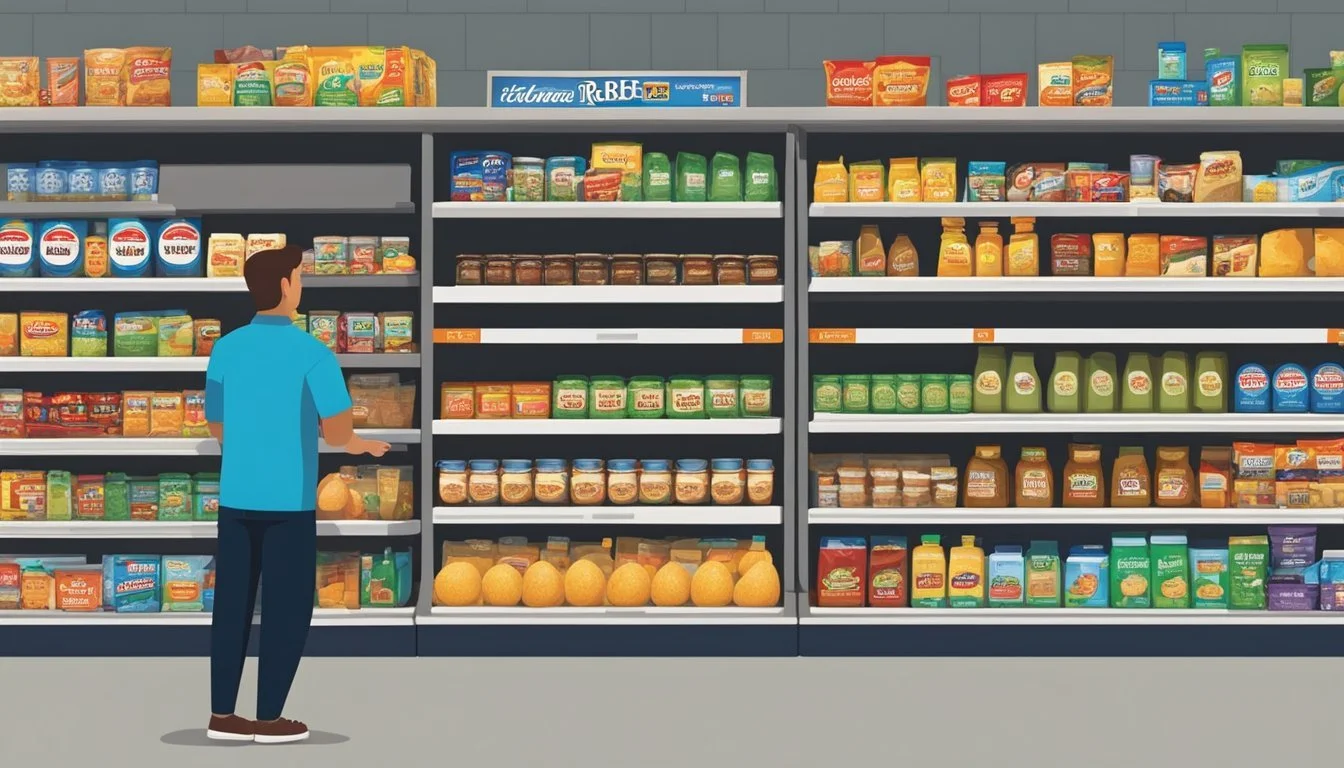Is H-E-B Cheaper Than Ralphs?
Comparing Supermarket Prices
Part of Our Grocery Store Guide with Details on H-E-B Prices and Ralphs Prices
Shopping for groceries efficiently often involves a comparison of supermarkets to determine which one provides not just better product variety or quality, but also the most cost-effective option for consumers. In the realm of grocery shopping, two stores that often come up for comparison are H-E-B and Ralphs. These supermarkets have established themselves as prominent grocery providers in their respective regions, with H-E-B dominating the Texas landscape, while Ralphs serves as a staple in the California market.
Prices and the overall cost of shopping are significant factors for consumers when choosing where to shop. H-E-B, known for its commitment to low prices and quality local products, tends to offer competitive pricing on a wide range of items, which includes their Texas Heritage line of cured meats praised for both their quality and attractive pricing. Ralphs, on the other hand, while also offering a variety of grocery items, often showcases deals through newsletter coupons and supports a gamut of payment options, including PayPal and Shop Pay Installments, making the shopping experience flexible for different budgets.
The question of whether H-E-B is cheaper than Ralphs does not have a simple one-size-fits-all answer, as pricing can vary based on product types, ongoing promotions, and location-specific economic factors. A direct side-by-side comparison may reveal strengths in different categories for each store. Consumers' final choice may ultimately hinge on their specific shopping needs, brand loyalty, or preference for store policies, such as union support, which Ralphs provides. Therefore, individuals looking for the most economical option may need to look at current pricing on the items they purchase most frequently and consider any additional benefits or store policies that affect their overall shopping experience.
Comparing Grocery Pricing Strategies
In the competitive landscape of grocery retail, H-E-B and Ralphs employ distinct strategies to offer value to shoppers. These tactics are pivotal in determining where consumers find the best prices for their grocery needs.
Overview of H-E-B's Pricing
H-E-B prides itself on competitive pricing, reinforced by a commitment to regional sourcing and in-house brands. They maintain a dynamic pricing model that often reflects local market conditions, potentially offering lower prices than national chains. H-E-B's utilization of weekly specials and digital coupons enhances savings, allowing customers increased opportunities to save at checkout.
Weekly Specials: Frequent discounts on popular products
Coupons: Digital offerings supplement savings
Ralphs' Pricing Tactics
Ralphs, a subsidiary of Kroger, leverages its national presence to negotiate lower prices from suppliers, which can result in savings at the customer level. Ralphs offers a loyalty program that rewards shoppers with discounts, fuel points, and personalized deals, tailored to their shopping history.
Loyalty Program: Discounts and rewards for frequent shoppers
Personalized Deals: Custom offers based on consumer preferences
Price Comparison by Product Categories
To illustrate the pricing differences between H-E-B and Ralphs more concretely, a category-by-category analysis is insightful. In essentials such as dairy, produce, and non-perishables, H-E-B often presents a lower price point which reflects its regional efficiencies and fewer middlemen. In contrast, Ralphs may offer competitive prices in organic and specialty goods, benefiting from Kroger's vast assortment and purchasing power.
Dairy and Produce: H-E-B typically showcases more affordable options.
Organic and Specialty Goods: Ralphs tends to be competitive, leveraging Kroger's scale.
Product Assortment and Variety
The product assortment and variety of a grocery store significantly influence consumer choice. When comparing H-E-B to Ralphs, the focus centers on the array of fresh produce, meat and dairy products, and dry goods they offer.
Fresh Produce Availability
H-E-B prides itself on providing a broad selection of fresh produce, often featuring locally-sourced fruits and vegetables which contributes to higher freshness levels. Shoppers typically find a wide array of produce, from staple vegetables and fruits to organic and exotic varieties. In contrast, Ralphs also offers a diverse produce section, with a commitment to quality and freshness, ensuring customers have access to a range of options for their culinary needs.
Local produce: Often more abundant at H-E-B
Organic options: Available at both stores
Exotic varieties: Both provide an array of international produce choices
Meat and Dairy Products
Meat and dairy selection is crucial for many shoppers, and H-E-B stands out for its quality and variety. Customers can find everything from basic cuts of beef, poultry, and pork to more specialized selections like grass-fed and organic options. Dairy products at H-E-B, including milk, cheese, and yogurt, cater to a range of dietary preferences, featuring lactose-free and plant-based alternatives. Ralphs is similarly stocked with a solid selection of meats, including in-house brands, and its dairy aisle offers a multitude of choices, from artisan cheeses to mainstream milk brands.
Meat variety: Grass-fed, organic, and standard options
Dairy choices: Including lactose-free and plant-based at both stores
Dry Goods and Packaged Foods
When it comes to dry goods and packaged foods, H-E-B and Ralphs both maintain a strong product lineup that extends beyond basics like pasta, rice, and beans. Each retailer carries an assortment of spices that can satisfy any level of culinary ambition, from novice cooks to seasoned chefs. Sweet tooths are catered for with varieties of chocolate and international confectioneries. Moreover, both stores recognize the growing demand for international cuisine, stocking shelves with items like hummus and specialty grains to meet consumer preferences.
Pasta and rice: Essential staples available in multiple brands and types
Spices and seasonings: An extensive range catering to diverse cooking traditions
Specialty items: Including chocolate, hummus, and gluten-free products
Private-Label Products Analysis
In analyzing the private-label products of H-E-B and Ralphs, one must consider both the quality and value offered by these store brands. These factors are pivotal in determining whether H-E-B is a more cost-effective option compared to Ralphs.
H-E-B's Store Brands
H-E-B has made significant strides in offering competitively priced private-label products without compromising on quality. For example, H-E-B's private label products often boast a price advantage, with items such as their non-alcoholic beverages leading the innovation segment and being sold at competitive prices. When comparing the private-label products, the value of H-E-B’s store brands is evident through their comprehensive range which includes:
Organic offerings: Catering to the health-conscious consumer.
Innovative products: Displaying leadership in product innovation within the private-label spectrum.
Their private brands are not just competitively priced but are also considered to be quality alternatives to national brands.
Ralphs and Competing Private Labels
Ralphs, operated by Kroger, also has a strong selection of private-label products that compete directly with national brands and other retailers' store brands. Ralphs' approach to private-label products includes:
Diverse tiered options: From budget-friendly to premium selections.
Focus on quality: They ensure that their private-label products meet certain standards to maintain customer trust.
By offering value through quality and competitive pricing, Ralphs aims to provide an alluring alternative to national labels, though they tend to vary regionally in terms of selection and pricing strategy.
Consumer Shopping Experience
When comparing H-E-B and Ralphs, consumers evaluate their experience based on the store ambiance and layout, customer service and assistance, and the convenience of the checkout process. These elements contribute significantly to the overall shopping satisfaction.
Store Ambiance and Layout
H-E-B stores are praised for their clean and spacious aisles which allow for a more comfortable shopping experience. They prioritize an organized layout that enables customers to find products with ease. Ralphs also offers a pleasant ambiance and is structured in a way that shoppers can navigate the store efficiently, often highlighting seasonal products at the front for accessibility.
Customer Service and Assistance
Shoppers at H-E-B often report positive interactions with employees, who are known for being helpful and friendly. The stores have policies in place to ensure customer inquiries are addressed swiftly, showcasing strong customer service values. Ralphs similarly emphasizes customer assistance, with clear signage and staff available for guidance. Both stores strive to assist consumers in a timely and respectful manner.
Checkout Convenience
H-E-B offers multiple checkout options, including self-checkout stations, to expedite the process. Their systems are up-to-date, aiming to reduce wait times. Ralphs leverages digital coupons through their app, which not only provides discounts but also speeds up the checkout process with barcode scanning. Both H-E-B and Ralphs have incorporated technology to improve transaction efficiency, directly enhancing consumer convenience at the end of their shopping trip.
Discounts, Deals, and Savings Programs
When comparing H-E-B to Ralphs, it's crucial for consumers to understand the intricacies of each store's discount offerings and savings programs. These can significantly impact the overall shopping bill, thanks to various coupons, discounts, and loyalty rewards.
Comparison of Rewards Programs
H-E-B does not offer a traditional rewards program; however, they engage customers with occasional promotions such as "Combo Locos" and "Meal Deals," which offer significant savings on bundled purchases.
Ralphs, on the other hand, operates a points-based rewards system tied to the Kroger Family of Companies. Shoppers earn one point for every dollar spent, and these points can be redeemed for fuel discounts or other savings. Moreover, Ralphs offers a range of personalized deals and digital coupons for its loyalty program members.
Coupon Policies and Regular Discounts
H-E-B has a straightforward coupon policy that encourages shoppers to look for yellow coupons in-store for immediate savings at checkout. Customers can also:
Access digital coupons online, redeemable in-store with a mobile number.
Benefit from weekly deals that rotate, allowing for regular savings on a variety of products.
Ralphs also embraces coupon use, doubling down on savings by allowing:
Digital coupons downloadable to a shopper’s loyalty card.
The stacking of one manufacturer coupon per item, along with their digital coupons, in most locations.
Both stores attract a loyal following due to their distinctive discount strategies, and savvy customers can leverage these to save money consistently.
Geographical Presence and Target Market
The geographical spread of a grocery chain and its target demographic are crucial factors that affect pricing. H-E-B and Ralphs serve distinct regional markets, each with its own cost structure and consumer preferences.
H-E-B in Texas
H-E-B operates extensively in Texas, with a strong presence in San Antonio, its base of operations. It has a deep understanding of the local market, appealing to Texas families looking for quality products at competitive prices. A robust footprint across the state, including both metro areas like Houston and Dallas-Fort Worth, underscores its commitment to providing accessible grocery options to Texans.
Texas: More than 400 stores
Target Demographics: Families, local residents
Key Products: Wide variety, including local Texan goods
Ralphs on the West Coast
Ralphs, a subsidiary of The Kroger Co., primarily serves the West Coast, primarily in Southern California. Its strategy targets a considerable consumer base located in densely populated urban regions, focusing on a diverse population with varied shopping preferences.
West Coast: California-centric stores
Target Demographics: Diverse urban population
Key Products: National and private label brands
Competition and Market Position
In analyzing the competitive landscape and market positioning of H-E-B, Ralphs, and other grocery chains, price point, store presence, and market share are pivotal factors. These chains operate in a relentless market where consumer preferences can substantially shift the balance of power.
H-E-B vs. Ralphs vs. Other Chains
H-E-B has established a strong presence in Texas, holding a significant market share (23.4%) in Houston as of early 2020, slightly ahead of Walmart's (21.1%). This competitive edge is attributed to its deep understanding of the local market and customer loyalty. Meanwhile, Ralphs, owned by Kroger, is a dominant player in Southern California and has recently been in the news for a massive $25 billion merger deal with Albertsons, indicating a strategic consolidation to bolster its market position.
When compared to other prominent chains like Walmart, which competes heavily on price, and Aldi or WinCo Foods, known for their discount pricing strategies, H-E-B competes by offering a tailored shopping experience and high-quality products. They contrast with warehouse clubs such as Costco and Sam's Club, which operate on a membership model, offering bulk goods at low prices. Trader Joe’s and Sprouts focus on niche markets with an assortment of unique and organic products. On the other hand, Target and Amazon are diversified retailers expanding their grocery footprint, leveraging their extensive distribution networks.
Market Trends and Consumer Preferences
In recent years, market trends have shifted toward convenience and online grocery shopping, with Amazon leading the charge in the online space. Consumer preferences are increasingly leaning towards a mix of value for money and a pleasant shopping experience. Warehouse clubs, like Costco, have capitalized on the bulk-purchase trend, combining value with an exclusive membership experience.
H-E-B and Ralphs must navigate these trends while contending with specialized stores like Trader Joe’s and Sprouts, which have carved out loyal customer bases around their distinctive product offerings. They also face competition from Smart & Final, Safeway, and Market Basket that cater to both cost-conscious and quality-focused segments. Wegmans stands out for customer service and store experience, competing less on price and more on the quality and variety of its offerings.
The dynamic between these various chains is a delicate balance of competitive pricing, customer loyalty, and adapting to quickly evolving consumer habits.
Alternative Shopping Methods
Consumers looking to save on groceries from H-E-B or Ralphs have additional options such as online shopping with various payment methods, as well as technologically enhanced in-store experiences.
Online Shopping and Delivery Options
H-E-B offers online shopping with delivery services that can be beneficial for those who prefer to shop from home. Customers can use Amazon Prime for expedited shipping options, where applicable. For seamless transactions, H-E-B supports various payment options including PayPal Pay Later, providing flexibility for shoppers managing their budgets.
Ralphs, on the other hand, provides a similar platform for online shopping and home delivery. Customers can take advantage of this service to compare prices directly and select the most cost-effective options without visiting the store.
Curbside Pickup and In-Store Technology
At H-E-B, shoppers can use curbside pickup—a convenient alternative that saves time while still offering competitive pricing. This service allows customers to shop online and have their groceries loaded into their vehicles at a designated pickup area.
Ralphs also offers curbside pickup, leveraging in-store technology to provide real-time updates on order status via their mobile app. This kind of technology integration improves the overall shopping experience and can potentially lead to cost savings through personalized offers and digital coupons.
Sustainability and Organic Offerings
When comparing H-E-B and Ralphs, it's not just the price that can sway a consumer's preference, but their sustainability initiatives and the range of organic products they offer play a significant role.
Organic Food Selection
H-E-B has made substantial strides in offering organic products to its customers. Its H-E-B Organics line is a direct response to the growing demand for organic food. These offerings include a variety of products from fresh produce to organically raised meat, and more. The brand provides USDA Certified Organic options, ensuring that shoppers are purchasing products that meet stringent organic standards.
Eco-Friendly Practices
On the sustainability front, H-E-B engages in numerous eco-friendly initiatives. The company focuses on energy conservation and diversification of energy sources to create a more sustainable operational model. They have listed a range of sustainability efforts that include, but are not limited to, donating millions of pounds of food to food banks, which contributes to waste reduction while supporting local communities.
Budget Planning with Grocery Chains
When considering grocery chains for budget planning, one must account for various strategies such as meal planning and the use of bulk buying to manage grocery budgets effectively. Choices between chains like H-E-B and Ralphs can hinge on these tactics, directly impacting the average cost of groceries for consumers.
Effective Meal Planning and Bulk Buying
Meal planning is a strategic approach that allows individuals to make a list of groceries tailored to their dietary needs and budget constraints. It reduces food waste and ensures that consumers buy only what they need. H-E-B offers a variety of fresh, frozen foods, and pantry staples that can be incorporated into an efficient meal plan.
Bulk Buying: Shoppers can save money by purchasing items in larger quantities, particularly from the bulk section. H-E-B's bulk section offers a range of products that can contribute to significant savings over time.
Bulk Items Benefit Grains Long shelf life, versatile usage Nuts Healthy snacking, salad toppings Spices Better value compared to small containers
Managing Grocery Budgets
Managing grocery budgets effectively requires understanding the pricing and savings mechanisms different grocery chains offer. For budgets sensitive to price fluctuations, H-E-B has been noted to provide competitive pricing, which can be more affordable than other chains like Ralphs, especially when accounting for in-store promotions and discounts.
Average Savings: By comparing the average prices of staple items across both H-E-B and Ralphs, consumers can gauge the potential for savings. Regular items often cost less at H-E-B according to shopper reports.
Grocery Item H-E-B Price Ralphs Price Loaf of Bread $2.50 $3.25 Gallon of Milk $2.75 $3.00 Dozen Eggs $1.50 $2.00
Each grocery chain also tends to roll out weekly ads and discounts, which can impact the budgeting strategy. Consumers should make it a habit to check for these deals when planning their grocery visits.
Shoppers who are familiar with the layout of their preferred store can further expedite their shopping trips, leading to less impulse buying. Store designs, like the layout of H-E-B, aim to increase the efficiency of the shopping experience, allowing customers to stick more closely to their meal plans and budgets.
Conclusion and Recommendations
When comparing H-E-B and Ralphs, consumers must weigh pricing and value. Both stores have their own merits in terms of product offerings and target demographics.
Final Verdict on Pricing and Value
H-E-B generally offers competitive pricing, often leaning towards lower prices on a variety of products. Their focus on local products and strong community ties often translates into cost savings for customers. Ralphs, meanwhile, provides a wide range of brands and is known for regular promotions and discounts. Consumers rate both chains favorably, but H-E-B's century-old legacy in Texas and commitment to community giving add value beyond pricing.
Tips for Consumers to Evaluate and Save
Consumers aiming to maximize savings should consider the following:
Review Weekly Ads: Both chains offer weekly ads with current deals. Consumers should regularly review these to evaluate prices.
Loyalty Programs: Join loyalty programs for access to exclusive discounts and member pricing.
Bulk Purchases: Buying in bulk can result in savings, especially for non-perishable items.
Seasonal Produce: Opt for seasonal produce for better prices and freshness. H-E-B's focus on local products often results in lower prices for local seasonal items.
By considering these factors, consumers can make informed decisions and save money on their grocery purchases at H-E-B and Ralphs.











